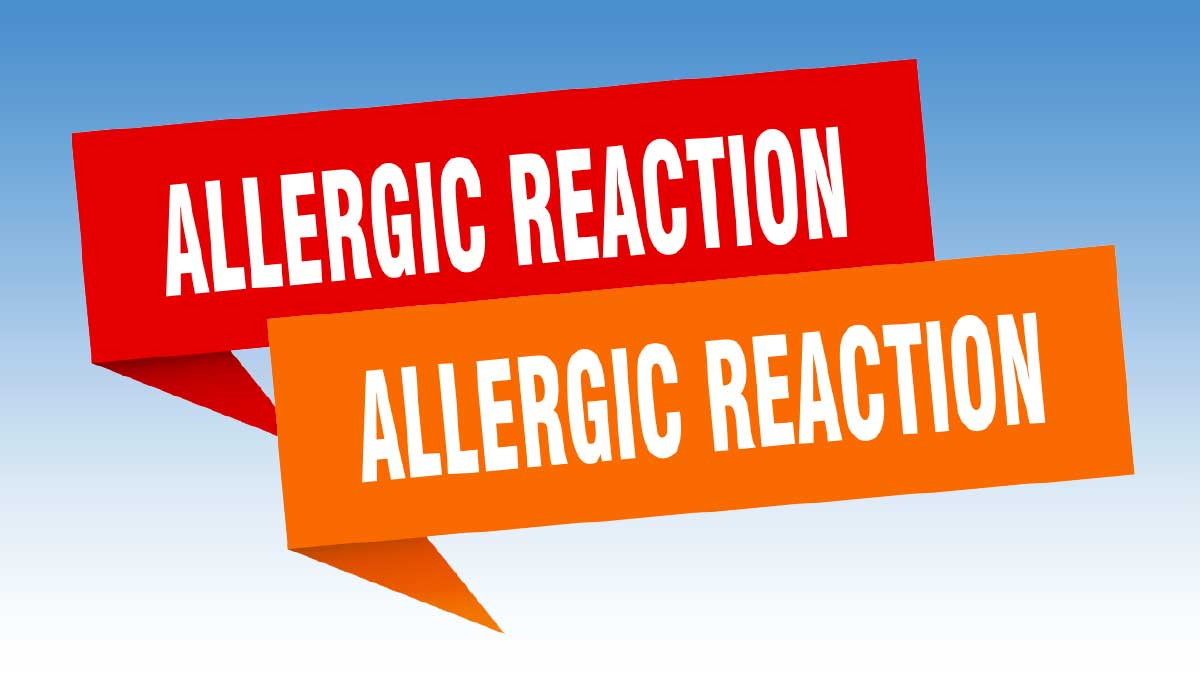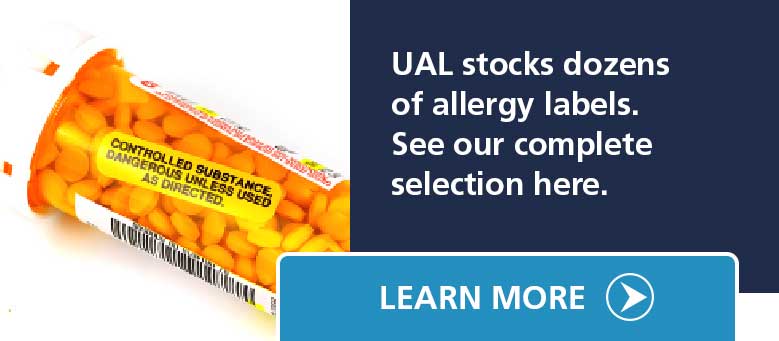More than 50 million people in the U.S. experience allergies each year. Although seasonal varieties make up nearly half of that total, other sensitivities, including reactions to medication, latex, food and more, can cause low blood pressure, breathing trouble, asthma attacks, and even death if not treated promptly. Preventing the risks that allergies create is challenging, especially in healthcare settings. Medical allergy alert labels are one tool care providers use to mitigate this risk.
What Are Medical Allergy Alert Labels?
Medical allergy alert labels communicate patient allergies and drug sensitivities. Placed on wristbands and patient charts, they clearly document key information guiding doctors and the care team.
Why Are Medical Allergy Alert Labels Important?
Multiple studies have found that adverse drug events (ADEs) account for up to 41% of all hospital admissions and 20 to 30% of those ADEs are considered preventable. In fact, over half occur at the time the drug is ordered, such as one that is prescribed to a patient with a documented drug allergy.
Further, anaphylaxis is a less common but life-threatening and debilitating condition caused by insect stings, foods and medicines including some antibiotics and anti-inflammatory drugs like aspirin. And although they are typically less severe, reactions to contrast media, foods, and other healthcare products are also common.
This is despite allergy prevention steps including the widespread use of Electronic Health Record (EHR) systems in use at nearly 90% of hospitals in the U.S.
EHR systems make it easier to create, update, and maintain active medication lists and medication allergy lists. Medical allergy alert stickers are a visible extension of those electronic lists. Incorporating stickers with electronic data increases the caregiver's awareness of patient allergies and helps to decrease ADEs.
How To Prevent Severe Allergic Reactions In Healthcare Settings
Preventing severe allergic reactions starts with understanding a patient's past medical history. Information from medical records and data collected at the time of admission help to identify potential red flags.
In addition to specific patient conditions, there are certain areas that require extra scrutiny.
Heparin
Blood thinners are used to treat or prevent blood clots and heparin is the most commonly used intravenous anticoagulant. In fact, one-third of hospitalized patients in the U.S., or about 12 million people a year, receive it. But, heparin-induced thrombocytopenia (HIT) is a potential complication of heparin therapy.
HIT can occur in two different forms:
- Nonimmune is the most frequent type of HIT and is not harmful
- Immune-mediated HIT is far less frequent but far more dangerous
The diagnosis of HIT should be clearly recorded in the patient's notes and marked as a serious allergy. Further, the patient should be issued an antibody card¹.
Medications
Other potential medication allergies also require scrutiny. Accurately documenting immune-mediated drug allergies in EHR systems and distinguishing between reactions such as hives, rash, itching and, in severe cases, anaphylaxis versus a drug sensitivity like diarrhea, help to inform future treatments.
Latex
Although latex allergies can occur in any patient, screening for them is especially important when a patient requires a surgical procedure. The screening should occur:
- Before admission for elective patients
- On admission for all non-elective patients
A patient’s past surgical history, if they have one, helps to determine a latex allergy risk level. Studies have shown that patients who had frequent surgeries or invasive diagnostic procedures during infancy were at higher risk.
And, if a patient has a known latex allergy or is at high risk, that information should be documented in the electronic health record.
Food
More than 90% of food allergy reactions are caused by:
- Eggs
- Fish
- Shellfish
- Milk
- Soy
- Peanuts
- Tree nuts
- Wheat
Developing protocols that prioritize these eight food allergens for patients, as they are admitted and throughout their care regimen, are important prevention steps.
Further, as with allergies in all areas, initial assessments and communications are essential to avoid potential complications. Once issues are known, using patient identifiers including a “Food Allergy Alert” sign on the door of the patient's room and noting the food allergy on the wristband helps prevent reactions.
Which Type Of Allergies Require Alert Stickers?
Care teams confront a number of different allergies among patients. These are four of the most common:
- Drug - as detailed above, drug allergies and the potential for ADEs are one of the most challenging problems that healthcare providers confront. Although there is no silver bullet solution, more effective communication is a deterrent.
- Food - hospitalized patients are dependent on the hospital’s food service organization to meet their nutritional needs but a food allergy can have a substantial impact on a patient’s health outcome. Food allergy labels are one step care teams use to guard against negative reactions from food allergies.
- Latex - even as healthcare providers have moved to 100% non-latex gloves, latex allergies remain problematic. Other common items used in patient care, including catheters, other tubing, tape from electrode pads and more, may still contain latex.
- Contrast - the contrast media used in X-ray, magnetic resonance imaging (MRI), computed tomography (CT) and angiography can cause both mild allergic reactions such as nausea or a skin rash and a more serious contrast-induced nephropathy.
Medical Alert Allergy Labels at United Ad Label
United Ad Label produces stock and custom medical allergy alert labels that help mitigate allergic reactions to drugs, food, latex, contrast media and more. Our catalog contains dozens of products designed to enhance patient safety. Contact us to learn more.
¹Keeling, David, Davidson, Simon, Watson, Henry (2006, 3/31). The management of heparin-induced thrombocytopenia. Wiley Online Library. https://onlinelibrary.wiley.com/doi/full/10.1111/j.1365-2141.2006.06018.x


